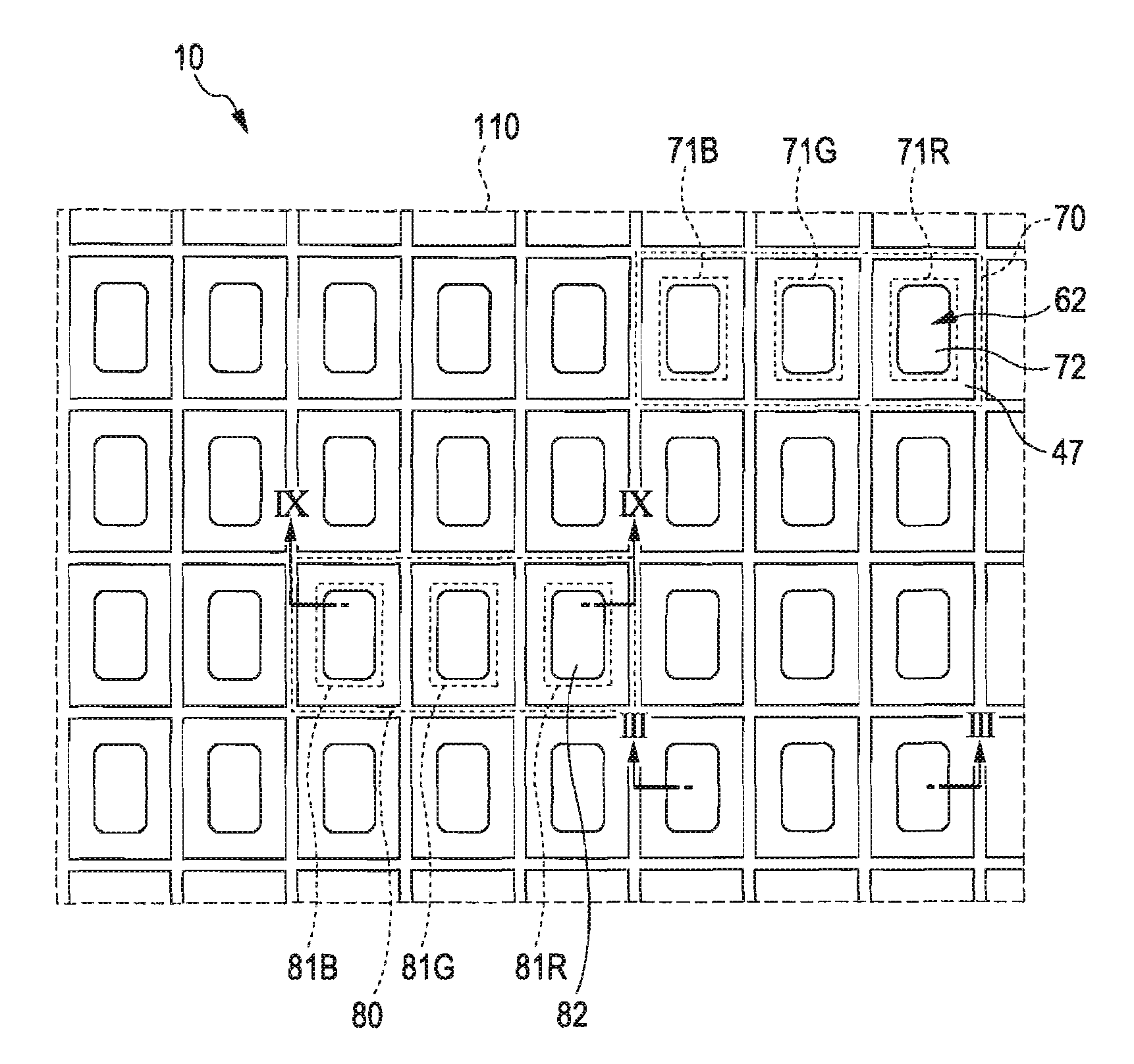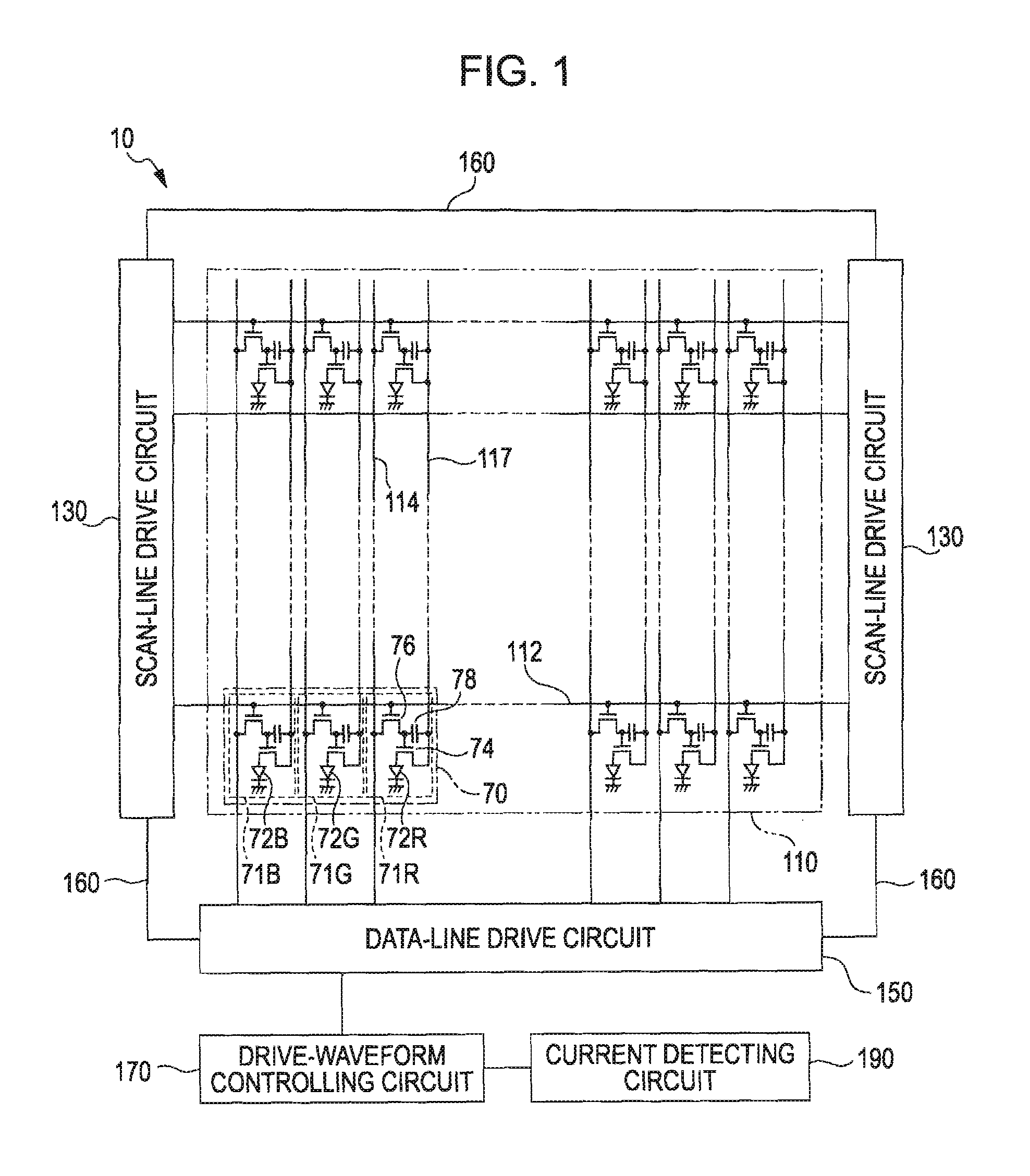Light-emitting device, method for driving the same, and electronic apparatus
a technology of light-emitting devices and electronic devices, which is applied in static indicating devices, instruments, non-linear optics, etc., can solve the problems of significantly reducing the display quality, difficult to measure the temperature of light-emitting elements with high accuracy, and organic el materials used for light-emitting elements
- Summary
- Abstract
- Description
- Claims
- Application Information
AI Technical Summary
Benefits of technology
Problems solved by technology
Method used
Image
Examples
first embodiment
[0043] An organic EL device and a method for driving the device according to a first embodiment of the invention will be described below with reference to FIGS. 1 to 7.
[0044] An overall structure of the organic EL device according to the first embodiment will be described first with reference to FIG. 1. FIG. 1 is a block diagram showing the overall structure of the organic EL device according to the first embodiment.
[0045] In FIG. 1 an organic EL device 10 is a display device having built-in drive circuits and driven on the basis of an active matrix driving system. The organic EL device 10 includes pixels 70, each of which is constituted by subpixels 71R, 71G, and 71B.
[0046] The organic EL device 10 has an image display area 110 in which data lines 114 and scan lines 112 are arranged in vertical and horizontal directions, respectively. The subpixels 71R, 71G, and 71B correspond to the intersection points of the data lines 114 and scan lines 112 and are arranged in a matrix. A set...
second embodiment
[0090] An organic EL device and a method for driving the device according to a second embodiment of the invention will be described below with reference to FIGS. 8 and 9. FIG. 8 is a plan view which illustrates the second embodiment and corresponds to the plan view in FIG. 7. FIG. 9 is a block diagram which illustrates the second embodiment and corresponds to the plan view in FIG. 5. In FIGS. 8 and 9, components equivalent to those in the first embodiment shown in FIGS. 1 to 7 are indicated by the same reference numerals, and descriptions of those components will thus be omitted.
[0091] In contrast to the first embodiment in which only the organic EL elements 82GT included in the temperature-detection pixels 80 function as temperature sensors, the subpixels 81R, 81G, and 81B constituting the temperature-detection pixels 80 (i.e. the temperature-detection pixels 80a and 80b) in the second embodiment shown in FIG. 8 have organic EL elements 82RT, 82GT, and 82BT that function as temper...
PUM
 Login to View More
Login to View More Abstract
Description
Claims
Application Information
 Login to View More
Login to View More - R&D
- Intellectual Property
- Life Sciences
- Materials
- Tech Scout
- Unparalleled Data Quality
- Higher Quality Content
- 60% Fewer Hallucinations
Browse by: Latest US Patents, China's latest patents, Technical Efficacy Thesaurus, Application Domain, Technology Topic, Popular Technical Reports.
© 2025 PatSnap. All rights reserved.Legal|Privacy policy|Modern Slavery Act Transparency Statement|Sitemap|About US| Contact US: help@patsnap.com



